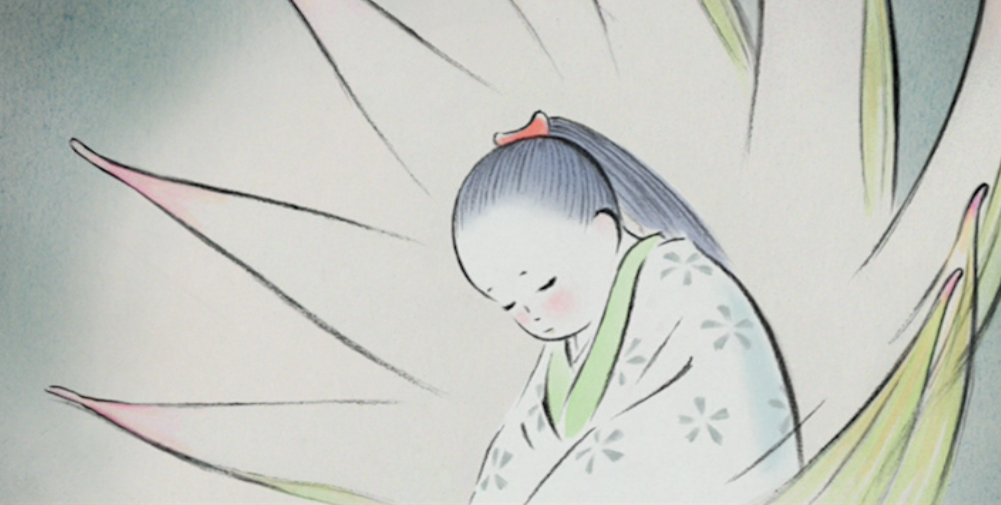The Tale of the Princess Kaguya (2013) dir. Isao Takahata
Mukashi, mukashi, long, long ago in Japan, there lived an old bamboo cutter and his wife who had no children. One day while the bamboo cutter was out in the bamboo grove, he saw one of the bamboo stalks glowing. A new bamboo shoot sprung up from the ground, and when it opened, there was a tiny princess inside. Thus begins “The Tale of the Bamboo Cutter”, a classic fairy tale of Japanese tradition.

This animated adaptation by Studio Ghibli centers the girl, who will become known as “Kaguya-Hime”, the Shining Princess. When the bamboo cutter’s wife takes hold of the tiny princess, it transforms into a seemingly normal human infant. (Perhaps symbolic of how fathers may envision a child, but it’s the mother who actually has to grow them.) The child is not normal, though, and grows quickly, like a bamboo shoot. The other children in the village nickname her “Takenoko” because of this.
While Takenoko enjoys frolicking with her friends in the countryside, her adoptive father finds a stash of gold in another bamboo shoot, and then a pile of fine robes. He reasons that the Heavens, which blessed him with a daughter in the first place, want him to take his “Hime” to the big city and raise her up to be a upper class lady.
The family moves to the capital, and Hime is given instruction in how to be a proper young woman. While a reluctant student, she proves suspiciously good at playing the koto and speaking properly. She’s also blossomed into a great beauty, and is given the name Kaguya-Hime. Although very few people have actually seen her due to social custom, the rumors of her good looks attracts multiple suitors, including high government officials and even the Emperor himself!
Kaguya-Hime tries to discourage suitors by assigning them impossible tasks, for she has no interest in marriage just yet, but this does little to stop their pursuit. Eventually, circumstances come to a crisis, and Kaguya-Hime finally remembers the real reason she came to Earth in the first place, when it’s too late to undo what she’s done.
The art style is done as a water color palette, like a children’s book, and is heavy on the traditional Ghibli lush scenes of nature. There are, however, moments where the animation gives itself over to expressionism to convey great speed or intense action. The music by Joe Hisashi is fitting and of high quality.
There’s a looming sense of claustrophobia in many of the scenes, as to ensure Kaguya-Hime’s “happiness”, society just kinds of assumes she wants to marry well, and men make decisions without consulting her. Parents of younger viewers may want to talk about social expectations and how they’ve changed.
My favorite character is the short servant, who clearly cares for Kaguya-Hime, even if she isn’t always the best help.
Some parents may be a bit reluctant as Japan’s more casual attitude towards children seeing nudity applies–we see women breastfeeding, and small kids going bare. More difficult to handle for some kids will be the fact that this tale does not have a conventionally happy ending, but one that is more bittersweet.
Recommended for families whose children are ready for more complexity in their fairy tales.

